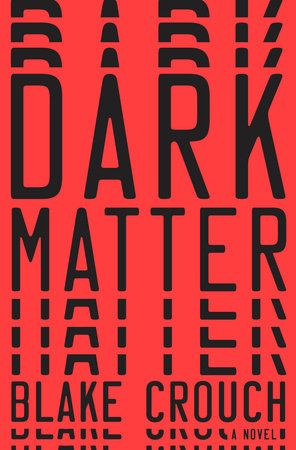 Written by Lauryn Smith Imagine experiencing another version of your life, one in which you made different, potentially life-altering decisions. Some aspects might be better, others worse. Perhaps you do not notice much of a change. Maybe your life is catastrophically altered. Black Crouch lays the groundwork for this thought experiment in his alternate universe book, “Dark Matter.” For me, reading science fiction has never been so much fun. This book is un-put-down-able. You know those books that you cannot wait to get back to, even while enjoying other activities? “Dark Matter” is one of those. Crouch details the story of Jason Dessen, a physics teacher at a Chicago college. I mean, a renowned theoretical physicist. Wait. Dessen is actually both, and each persona lives in a different dimension. Crouch establishes the former as the story’s protagonist. This Dessen, AKA Jason 1, lives a quiet, blissful, content life with his wife and son. One day while walking home from a local bar, he is abducted and taken to an enigmatic warehouse, where, amidst the confusion of events, he loses consciousness. He wakes to praise from a handful of individuals he does not recognize yet who somehow know him. In fact, he comes to realize that there is a lot about this place, this life, he does not recognize, and much of what he does find familiar is distorted in some way, shape or form.
0 Comments
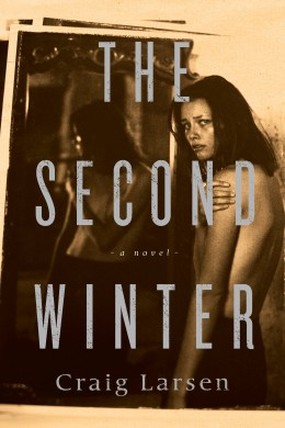 Written by Lauryn Smith I thought I knew what I was getting into when I began reading Craig Larsen’s “The Second Winter,” a fictitious story that takes place during World War II. I was confident that the book would be interesting. (Anyone who knows me knows that historical fiction is right up my alley.) I feared, though, that the book would be only marginally original, that it would not stand out among the many others also set during wartime. It was not long before I realized how wrong my latter expectation was. Larsen expertly differentiates “The Second Winter” by narrowing his scope, homing in on often overlooked subtleties inherent to this anecdote-ridden part of history. With a downtrodden family at the heart of the novel, Larsen emphasizes strained familial relationships and details the twists and turns of fate that are generated by various interpersonal interactions. The war merely acts as a backdrop, a driving force. This unexpected approach makes for a deep, fulfilling read as the plot is enhanced by the setting rather than carried by it. (A special thanks to the author for providing me a copy of the book!) Dark and dismal, “The Second Winter” takes place in 1941 in German-occupied Denmark. Fredrik Gregersen, a large, callous, imposing man who oversees a small farm in Jutland, partakes in a prohibited side business, namely helping Jewish fugitives cross the border into Sweden. One night, he is presented with an opportunity to steal a satchel of valuable jewelry from a family of escapees, which he does without a second thought. Contained in that satchel is an expensive necklace, which ends up being a key element of the story. The plot thickens with each transfer of ownership of the necklace. 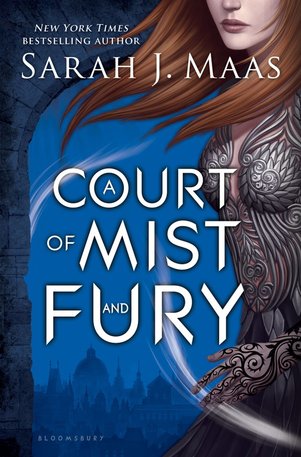 Written by Lauryn Smith As promised, I read “A Court of Mist and Fury” by Sarah J. Maas. You may remember my slightly scathing review of its predecessor, “A Court of Thorns and Roses.” Though I still have some qualms, the second in the “A Court of Thorns and Roses” series exceeded my expectations. The story picks up right where the first left off. In the aftermath of bad girl Amarantha’s demise, Feyre returns to life in the Spring Court with soon-to-be hubby Tamlin. But things are not all roses and daisies anymore. First of all, she has that tattoo linking her mind to Rhysand’s, as well as Rhysand’s pesky bargain regarding Feyre’s living arrangements, to worry about. Add to that Tamlin’s newly developed overprotective personality, and the fact that all in the Spring Court abide by his command to keep Feyre safe by restraining her to the grounds and limiting her access to information. Feyre used to feel thankful for Tamlin’s protection, but now she feels stifled, bored and unchallenged. She also cannot get over the guilt regarding the crimes she committed in order to save everyone from Amarantha’s wrath. In addition, the more she gleans about how the courts work, the more repelled by the system she becomes. Oh yeah, and she now has all the powers of a High Fae, powers that reflect those of each of the courts’ High Lords. On the day of Feyre and Tamlin’s wedding, Feyre falls apart. As he did multiple times in “A Court of Thorns and Roses,” Rhysand pops in and saves the day, whisking Feyre away to the dreaded Night Court. That is when everything changes and Feyre’s perspective shifts. Instead of willingly remaining a veiled treasure, Feyre gets her life back on track. She grows familiar with the people, places and politics of the Night Court, trains to control her potent powers and flirts mercilessly with Rhysand. All the while, a new and fiercer evil looms. And once more, Feyre is key in ending it. Maas again focuses on the good versus evil trope, this time on a dual level, both between the courts and an outside force as well as between individual courts. This is a classic and widely appealing theme, so no complaints there, granted the lack of emphasis on the plot leaves something to be desired. Also again, Maas attempts to make the story grab adult readers by including explicit sex scenes. Maas needs more than said sex scenes to make the novel appropriate for adults. Take them away, and this book is young adult through and through. I will contend, though, that the integration of action and romance is accomplished much better in “A Court of Mist and Fury” than in its predecessor. 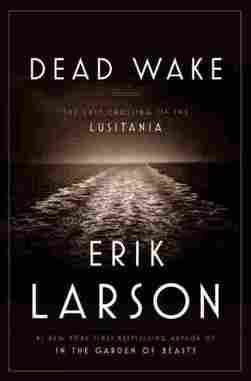 Written by Lauryn Smith I did not think it would be possible, but “Dead Wake” has replaced “The Devil in the White City” as my favorite Erik Larson book. (Can I take a second to brag that my copy of the former is signed by the author?!) If you have not read any of this guy’s books, you need to. Like now. In “Dead Wake,” Larson explores the events during the weeks leading up to the sinking of the luxury ocean liner the Lusitania on May 7, 1915. Many people have heard of this World War I disaster, but few know the minute details, the ill-fated set of conditions that culminated in the deaths of hundreds of passengers. In his characteristic compelling biographical style, Larson educates readers on this maritime catastrophe. First, let’s talk basics. The Lusitania was a Cunard transatlantic liner that navigated between New York City and Liverpool. In response to competition, it was designed in 1907 to be one of the biggest, fastest, most luxurious and most modern ships around. It was the first of Cunard’s “grand trio” of four-funneled ships. This “Greyhound” was cruising from NYC to Liverpool in seas recently declared by Germany to be a war zone when it was attacked by a German U-boat, or submarine. On its final excursion, the Lusitania was captained by William Thomas Turner and contained passengers both regal and humble, as well as numerous children. Remarkably, as Larson demonstrates, the passengers were relatively calm sailing into submarine-infested waters during the tenth month of the war, likely an effect of the widespread expectation that civilian ships were to be kept safe from attack. But as luck would have it (and by luck I mean an array of circumstances that melded juuust so), Unterseeboot-20, the German submarine captained by Walther Schweiger, torpedoed the Lusitania, effectively ending its nautical reign, as well as forcing America’s participation in the war. That summary of the Lusitania is truly just the beginning. It is tempting to detail all the interesting components Larson compiles in his newest nonfiction tale, but not only would that spoil the story, it would take ages. Larson unearths the myriad facets, both large and small, that led to this calamity, and he describes how the interrelation between them resulted in such an outcome. Weather, politics, ship design, cryptanalysis and more—all are important pieces of the story, and Larson presents them eloquently and effortlessly. He paints a vivid picture. Readers will walk away feeling quite familiar with the Lusitania, its history and its peripheral contexts. 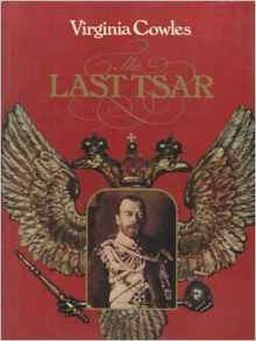 Written by Lauryn Smith I love Russia. Its architecture is beautiful, its culture fascinating, its people vogueish, its history unique. I recently returned from a trip to Moscow, and wow. The country is just incredible. To supplement my research prior to travel, I borrowed my dad’s first edition copy of “The Last Tsar,” also known as “The Last Tsar & Tsarina,” by Virginia Cowles. (His copy happens to be stuffed with a handful of newspaper clippings, all of which relate in one way or another to the notorious Romanovs. Borrowing old books is so much fun). As the book’s title implies, “The Last Tsar” is the nonfiction account of Tsar Nicholas II, the final Russian Emperor. Until 1917, tsars were the supreme rulers of Russia. (The term “tsar” derives from the Latin word for “Caesar,” or emperor.) Nicholas began his reign in 1894, and he was forced to abdicate in 1917. The following year, he and his immediate family were unceremoniously killed en masse by the Bolsheviks. Cowles outlines the events that led to the end of imperial rule and the unfortunate fate of Nicholas, and she does so in a way that is both thorough and comprehensible. Cowles elucidates Nicholas’s character, as well as that of his wife, the German-born Alexandra Feodorovna. The couple, we learn, unfalteringly believed that their rule was a God-given right. Alexandra had great influence on Nicholas and his policies, and the infamous Grigori Rasputin had great influence on Alexandra. Nicholas possessed a warm, timid personality, especially toward Alexandra and their five children. However, he was christened “Bloody Nicholas” by the Russian people, who derided his dependence on Alexandra’s input, his inept leadership and his role in thrusting Russia into a state of war and violence. 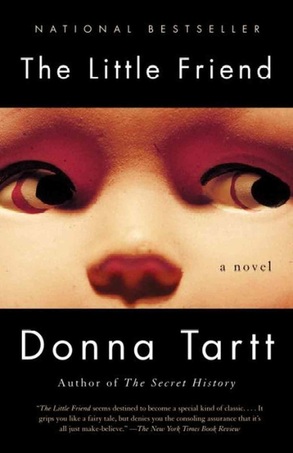 Written by Lauryn Smith You probably know by now that Donna Tartt is one of my favorite authors. “The Secret History” and “The Goldfinch” are both easily on my list of top 10 favorite books. Now I am here to discuss “The Little Friend.” I will not be adding “The Little Friend” to my top 10 list, but it is still worth reading… and then reading again. In this work of fiction, Tartt takes us to the American South. In Alexandria, Mississippi, a young, headstrong girl named Harriet is determined to find justice for the unsolved murder of her older brother Robin, who on Mother’s Day 12 years earlier was found dead, hanging from a tree in his own front yard. Ever since that fateful day, Harriet’s family, particularly her mother Charlotte, has been despondent, and memories of Robin cast woeful shadows whenever they arise. Trouble ensues as Harriet and her faithful companion Hely home in on Danny, a member of the ne'er-do-well Ratliff family, whom they suspect of the crime. Tartt uses these circumstances to illustrate the dichotomies of good and evil, innocence and guilt. Doing so through the lens of a child is a genius decision, as it also makes possible the detailing a person’s coming of age, which adds depth to Tartt’s efforts. The latter theme is tried and true, but Tartt imagines a wholly unique version of the tale, giving readers a flawed though entirely lovable and unexpected protagonist. Review: “Harry Potter and the Cursed Child” by Jack Thorne, J.K. Rowling and John Tiffany11/13/2016 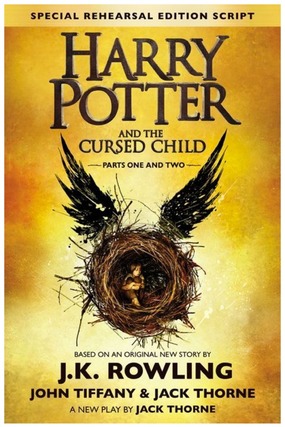 Written by Lauryn Smith Nineties kids rejoice! Jack Thorne, with the help of J.K. Rowling and John Tiffany, has gifted us with a continuation of the “Harry Potter” series—but not in the way you would expect. The three chose to take the story to the stage. Lucky for those of us living in America, the script has been specially bound in book form. (Unfortunately, you can only see the theatrical production at the Palace Theatre in London.) The next installment, titled “Harry Potter and the Cursed Child,” takes places 19 years after “Harry Potter and the Deathly Hallows.” Instead of focusing on the titular character as in the first seven books, we now focus on his son, Albus Severus Potter. The young Potter, who is just beginning his studies at Hogwarts, struggles to live up to The Chosen One and his legacy in the wizarding community. To make matters worse, the Sorting Hat places Albus in the House of Slytherin. After a dispute between son and father a few years later, Albus becomes fed up with perceived expectations, so he determines to have an impact of his own, despite his father’s ignorance and overprotection. What follows is an epic of good versus evil, light versus dark, that involves Cedric Diggory (yup), House drama, a forbidden Time-Turner and more. Past and present merge, family dynamics are explored, and potential catastrophic darkness looms. Let’s set something straight from the get-go. This read is a screenplay, descriptions of characters, locations, actions and all. The story is therefore more superficial than the previous books in the series. The 300 pages are reflective of the length of the play, and the detailing is minimal. If you are not used to reading screenplays, you may be a bit disappointed with “Harry Potter and the Cursed Child.” 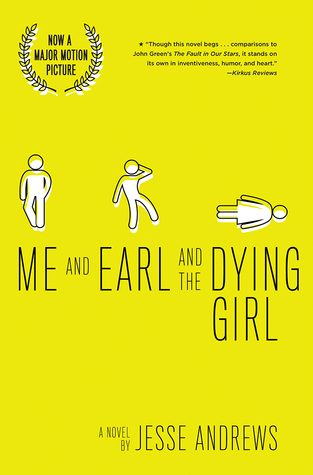 Written by Lauryn Smith Remember how I was just saying that it is possible for young adult novels to be both quirky and meaningful? (I recently reviewed one that was just… not.) I now have proof. “Me and Earl and the Dying Girl” by Jesse Andrews is an awesome YA novel, one that is both entertaining and artful. It was even made into a movie recently. No, I have not seen the movie adaptation yet; I am abiding by the unspoken rule that you need to read a book before you see its movie. Now that I have read the book, I am all for seeing the motion picture; it is probably awesome, too. The story is told from the perspective of Greg Gaines, a teenager dealing with the peril that is high school. His philosophy: be friendly to everyone, but make no friends. The logic is that if everyone knows just a little bit about you, they will generally like and accept you. Things are easier that way. The only person Greg defines as a friend is Earl, a gritty guy with a dirty mouth who lives by no rules. The boys’ shared interest is film, both the viewing of and making of. Together, they recreate all kinds of movies, most of which turn out comedic despite the intended genre. All is well and good until one day Greg’s mom asks him to befriend Rachel, a childhood acquaintance who was recently diagnosed with leukemia. After some trial and error, Greg becomes Rachel’s welcome comedic relief. Despite his reluctance to let anyone see his films, Greg shares them with Rachel, who finds great joy in them. So much joy, that Greg and Earl vow to make a film about Rachel’s life. 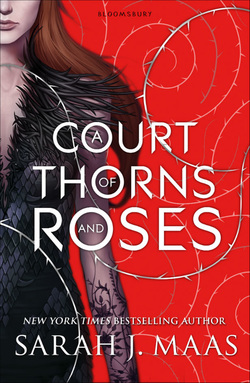 Written by Lauryn Smith I am not likely to win any friends with my review of “A Court of Thorns and Roses” by Sarah J. Maas. Recommended to me by another Reviewer, this book is a Young Adult fan favorite, but I question whether I can get on board. Before you ask, yes, I kept an open mind while dutifully reading through to the very last page (a necessity, since I swore to read its sequel, which I have been assured is much better than its predecessor). “A Court of Thorns and Roses” is the first in Maas’s A Court of Thorns and Roses series. An amalgamation of “Beauty and the Beast,” “Fifty Shades of Grey,” “Twilight,” a touch of “The Lion, the Witch and the Wardrobe” and a pinch of “The Hunger Games,” this book exemplifies fan fiction, and not entirely originally (more on this later). In it, a teenaged, wholly human diamond in the rough named Feyre kills a fearsome wolf in the woods and soon after is snatched from her derelict home by a handsome and fierce faerie, because, surprise, that wolf was actually a faerie, too. But her captor, Tamlin, is no ordinary faerie. He is a High Fae—a normal faerie but more striking, more magical and more powerful. Now a forced resident of Tamlin’s estate, Feyre learns that the kingdom’s residents are in turmoil and at risk of losing their powers, effects of a curse that was put on the land. Another effect? The faeries all have masquerade masks permanently stuck to their faces. Naturally, Feyre and Tamlin bond and fall in love, and Feyre’s sacrifice on Tamlin’s behalf restores peace to the land. 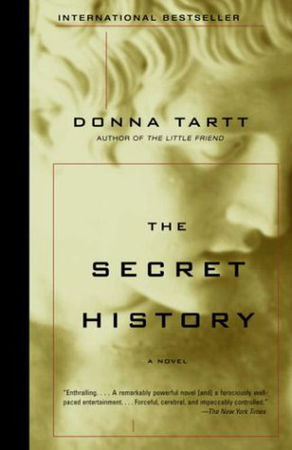 Written by Lauryn Smith Immediately after finishing Donna Tartt’s “The Goldfinch” earlier this year, I thought “this-author-and-her-books-are-so-good-I-need-more-like-now.” Luckily, I own a copy of “The Secret History,” which I first read back in high school. Reading it again, my conviction that this woman will forever be one of my favorite authors is even stronger. “The Secret History” is Tartt’s debut novel. In it, she tells the fictional tale of a tightly knit, isolated group of six students who study Greek at an elite New England college. Yawn? I think not. Tartt presents the novel’s entire premise from the get-go, so I am not giving away a major plot point when I tell you that one member of the group is murdered by the others. “The Secret History” is commonly referred to as a “murder mystery in reverse.” Once readers are alerted of the murder, the remainder of the book explores the execution and consequences of the crime, as well as the reason behind it. The narrative is presented as a years-later reflection from the perspective of one of the students, Richard Papen. As he details his college experience, he focuses on the peculiarities of his Greek classmates and Julian, the group’s eccentric, highly revered professor, who is also, unconventionally, the group's only professor. Richard relates the nuanced elements of the many and varied interactions he has with each member of the clique, and these elements incessantly compound until they explode into one of the best twist endings you will ever encounter. |

Enjoying my book reviews? If you’ve found them helpful or simply love diving into a good book, consider supporting my caffeine-fueled reading sessions! Your contribution helps keep the reviews coming and ensures I stay wide awake for those late-night reading marathons. Cheers to a shared love for literature! ☕️
Categories
All
|
